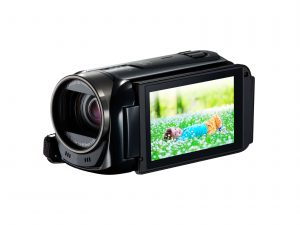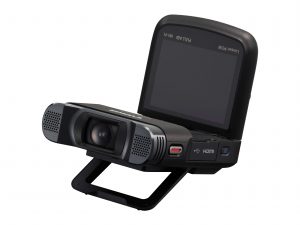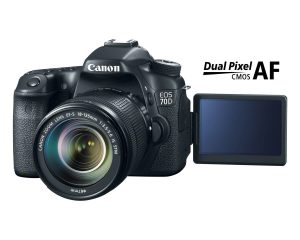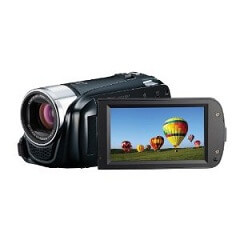 Virtual reality has become a big business. Brands from several companies, including Apple and Facebook, have gotten into the virtual reality space in recent years. However, an up-and-coming aspect of the virtual space is augmented and mixed reality – a slightly different take on the concept. Canon, a company known for its cameras and optics, has entered the space with the Canon MREAL Platform.
Virtual reality has become a big business. Brands from several companies, including Apple and Facebook, have gotten into the virtual reality space in recent years. However, an up-and-coming aspect of the virtual space is augmented and mixed reality – a slightly different take on the concept. Canon, a company known for its cameras and optics, has entered the space with the Canon MREAL Platform.
What is Mixed Reality and how is it different from Virtual Reality?
Mixed Reality (MR), sometimes referred to as ‘Hybrid Reality’, combines elements of both augmented and virtual reality. While virtual reality immerses you in an entirely digital world, mixed reality adds real-world elements like textures, sounds, and light into the mix. This means that with mixed reality, users can interact with digital objects as if they were real, in a more realistic way. For example, a virtual table could be used to virtually hold a physical object, allowing the user to interact with the digital environment in an intuitive and natural way.
MR also has implications for remote collaboration, allowing multiple users from different locations to connect and interact with each other without being physically present in the same space. This technology has been successfully used in training, education, and entertainment settings, allowing users to explore three-dimensional objects with their hands as if they were actually there. Mixed reality also has advantages when it comes to reducing travel costs, time, and energy associated with collaborating across distances.
Using mixed reality is a powerful way to enhance the user experience in any setting. The technology provides an immersive, tactile approach to interacting with digital content, allowing users to explore objects and environments through a combination of physical movements and computer-generated visuals. It is also a great tool for communicating ideas and collaborating on projects, as its ability to bridge physical and virtual spaces makes it ideal for remote meetings, training, and demonstrations. Mixed reality also allows users to visualize complex 3D models in real-time, providing a more efficient way to evaluate designs or make edits on the fly. Finally, it has the potential to revolutionize how we interact with products, machines, and data in industrial settings by providing an intuitive, hands-on approach to understanding complex systems. Mixed reality offers an exciting and powerful way to explore virtual worlds and bridge the gap between physical and digital realms.
Mixed reality is also finding its way into more everyday applications outside of gaming, including education, healthcare, and retail. For example, teachers can use mixed reality to create immersive learning experiences, allowing students to virtually explore difficult concepts such as anatomy or the solar system. In healthcare, mixed reality can help doctors diagnose and treat patients more effectively by providing 3D visualizations of patient data. Finally, retailers are using this technology to create engaging shopping experiences through virtual try-ons and product demos.
Canon MREAL
Canon has placed a strong emphasis on the interaction between the real and virtual worlds. In particular, the focus of the platform is to make the way the physical world touches the virtual world in a natural way. With other hardware platforms, your real hands tend to mix too much with the virtual objects. In particular, they tend to lose their depth and vanish into virtual items or remain on top of them.
Canon has worked hard to ensure that your hands are tracked accurately and that only the parts that should be behind an object are. For example, if you are grabbing the handle of a microwave, your fingers will go behind the handle while your hand will remain in front. Obviously, this focus helps to make the Canon MREAL experience more natural so that new uses can be found for the technology. It makes it more accessible, so more people can find usefulness in the technology.
The Canon MREAL hardware has been available in Japan and the company is looking to bring it to the United States. To learn more about the technology and follow the product’s release plans, check out the product website.
Interview by Allante Sparks of PLuGHiTz Live Special Events.
Get $5 to protect your credit card information online with Privacy.
Amazon Prime gives you more than just free shipping. Get free music, TV shows, movies, videogames and more.
The most flexible tools for podcasting. Get a 30 day free trial of storage and statistics.
Podcast: Play in new window | Download
Subscribe: Apple Podcasts | RSS | More



 Shooting DSLR video has often had trouble with auto-focusing on moving subjects. But
Shooting DSLR video has often had trouble with auto-focusing on moving subjects. But 
